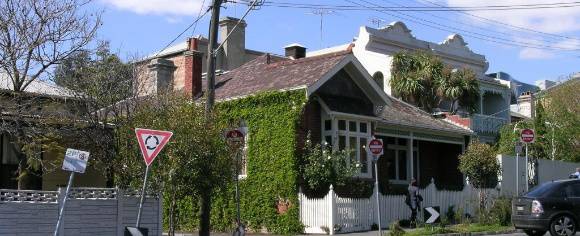| Back to search results » | Back to search page » |
|
West Richmond Precinct
Other NameWest Richmond Precinct LocationHoddle Street and Erin Street RICHMOND, YARRA CITY LevelIncluded in Heritage Overlay |
|
Statement of Significance
What is significant? - The houses, flats and other buildings constructed between c.1855 and c.1945 and shown as Contributory, or Individually Significant on the precinct map. The following buildings and places are Individually Significant to the precinct: the West Richmond Railway Station complex: 7 & 25-27 Bowen Street; 33 & 45 Egan Street; 2-10, 15-27, 18-22, 26, 39-53, 57 & 67 Erin Street; 23, 44, 46, 50, 55, 68, 69 & 70 Highett Street; 129, 139, 151-157 & 167 Hoddle Street; 64, 66 & 128-130 Lennox Street; 2-6, 3, 9-15 Muir Street; 16-18 Normanby Place; 33 Smith Street; as well as HO256 - 1 Egan Street, HO257 - 29 Erin Street, HO266 - 117 Hoddle Street & 2A Egan Street, and HO267 - 171 Hoddle Street. Non-original alterations and additions to the Contributory or Individually buildings shown on the precinct map, and other houses and buildings are not significant. How it is significant? Why it is significant? The precinct demonstrates the principal characteristics of residential areas in Richmond that were largely developed prior to World War II and are comprised of predominantly Victorian era housing, supplemented by Edwardian and interwar infill, with commercial buildings in small groups and on corner sites. Overall, the intactness of the building stock to the period prior to World War II is very high and creates visually cohesive and consistent streetscapes that are complemented by traditional public realm materials such as asphalt footpaths and bluestone kerb and channel. (Criterion D) The Richmond Hill area within the precinct has aesthetic significance as an enclave of grand Victorian houses, which enhanced by its hillside topography, mature plantings and unusual urban elements such as the obliquely-sited West Richmond railway station, and a stepped lane off Highett Street. The aesthetic qualities of the buildings in the precinct are enhanced by traditional streetscape materials such as asphalt footpaths, bluestone kerb and channel and bluestone laneways. Erin Street is notable as a grand nineteenth century streetscape containing of some of Richmond's most substantial late nineteenth century houses, most with extravagant 'Boom era' decoration and many retaining original front and side fences. At the centre of the precinct is the former 'Elim' mansion, still set within its grounds, which is a local landmark. Highett Street is also notable the distinctive historic landscape character created by the elevated siting of the houses on the south side with generous garden setbacks, which is very rare in Richmond. (Criterion E) The Richmond Hill area within the precinct is historically significant for its associations with various eminent Victorians and others who lived there and were important in the development of Richmond. (Criterion H)
The West Richmond precinct, comprising the houses, flats, commercial and industrial buildings constructed in the period from c.1855 to c.1945, is significant. The following buildings and features contribute to the significance of the precinct:
-The former Relova Redressing Laundry and the former Australian Automatic Cigarette Paper Company Pty Ltd in Hoddle Street.
- The West Richmond Railway Station complex including the mature plantings.
- The overall consistency of building forms (pitched gabled or hipped roofs), materials and detailing (walls of weatherboard or face brick or stucco, prominent brick or render chimneys, post-supported verandahs facing the street set out on two levels as required with cast-iron detailing and timber detailing for Federation/Edwardian-era houses), and siting (small or no front and side setbacks except in certain streets).
- The original front and side fences to many houses.
- The contrast between the grand housing on Richmond Hill with the more modest working class housing on the flat areas around York Street.
- The nineteenth century subdivision pattern comprising regular allotments served by rear laneways.
- Traditional streetscape materials such as asphalt pathways and bluestone kerb and channel and bluestone laneways, including the unusual stepped laneway off Highett Street.
The West Richmond precinct is of local historic and aesthetic significance to the City of Yarra.
The precinct provides tangible evidence of the key phases in the residential development of Richmond from the time of earliest settlement in the 1850s to the inter-war period and demonstrates how the areas closest to Melbourne town were the first to be subdivided and developed. It is also important for demonstrating an important phase of development in the late interwar period, which was characterised by industrial and higher density residential development. The precinct is of note as a vivid illustration of how class distinctions were reflected in the design and location of housing from the earliest time of settlement in Richmond. The substantial mansions and villas in and around Erin Street, in particular, demonstrate the early importance of Richmond Hill as a suburb favoured by wealthy and the elite, overlooking the working class housing that developing on the flat areas around Smith and York streets. (Criteria A)
Group
Residential buildings (private)
Category
Residential Precinct




